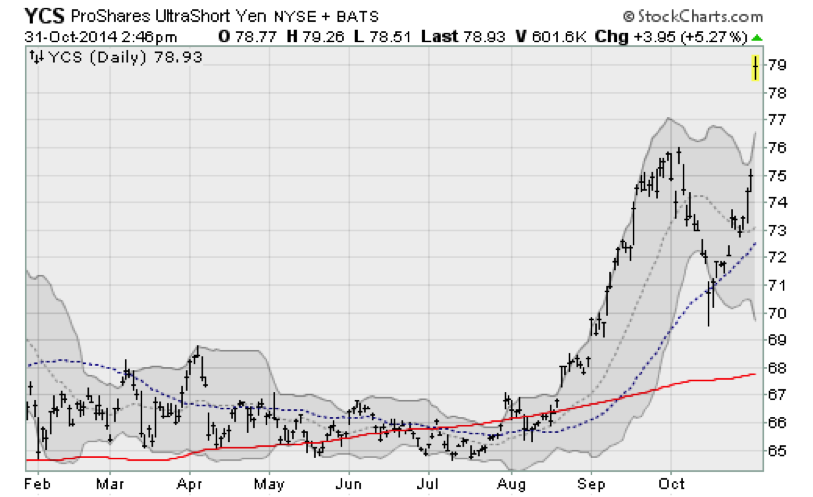It’s over. More than two years after it was first announced, the Federal Reserve has ended its "QE3" bond-buying stimulus which, at its start, was mainlining $85 billion a month into the financial system. The steady injection of cheap money has bolstered stocks since late 2012, with the rise in equities closely correlated to the rise in the Fed's monetary base, which has swelled from $800 billion before the recession to about $4.5 trillion now.
Investors had reason for concern as QE3 wound down. The end of previous iterations — QE1 in 2010 and QE2 in 2011 — resulted in economic stalling and stock market losses. The fear was that without the Fed's steady support of the bond market, we would suffer a repeat. Indeed, in the depths of the market selloff in the middle of October, the chatter surrounding a QE4 program grew louder.
Related: Alan Greenspan, Former Fed Chair, Goes for the Gold
All the gnashing of teeth seems silly in retrospect after the Bank of Japan juiced global markets on Friday in a surprise move by tripling down on its own asset purchase stimulus, increasing the pace of its monthly purchases and broadening its scope to stocks and real estate investment trusts. The program, which the BoJ has dubbed quantitative and qualitative easing, is larger and more aggressive relative to the size of Japan's economy than the Fed's QE3 program was.
Magnifying the move was an announcement by Japan’s primary government pension fund that it would increase its allocation to stocks and foreign assets.
The moves combined to hit the Japanese yen hard, which has been an unofficial goal of Japanese leaders in an effort to increase inflation and boost export competitiveness. And that, in turn, is why stocks here at home rallied so hard. A weaker yen, relative to the dollar, boosts yen carry trades — two-sided currency bets that hedge funds and other speculative traders use to fund positions in stocks and other risky assets.

It works like this: They short the yen, often using leverage, and use the proceeds to invest in assets denominated in dollars or euros. Not only do they get the benefit of the yen's weakness against the dollar — as represented by the ProShares UltraShort Yen ETF (YCS) chart shown above — but they bag the gains in the underlying assets, be it U.S. stocks or Eurozone sovereign bonds.
So it's no wonder the Dow Jones Industrial Average has soared to a new record high as it flirts with the 17,400 level for the first time ever while the S&P 500 retakes the 2,000 level.
Related: 7 Ways to Make the Most of Your 401(k)
There are risks here. Japan is following a beggar-thy-neighbor mercantilism strategy that the Chinese will not tolerate for long, threatening an outright currency war. The yen's decline could get out of control, roiling financial markets. And the evidence is mixed that a weaker yen is even what the Japanese economy needs to heal.
For now, driven by big bets made in the currency market, the yen's decline is providing a big impetus to the U.S. stock market. Headwinds could rematerialize following the results of the mid-term elections this week if investors fear the predicted takeover of the Senate by the GOP will set the stage for a repeat of the budget battles that rattled markets following the 2010 mid-terms.
We’ll see what happens Tuesday.
Top Reads from The Fiscal Times:






